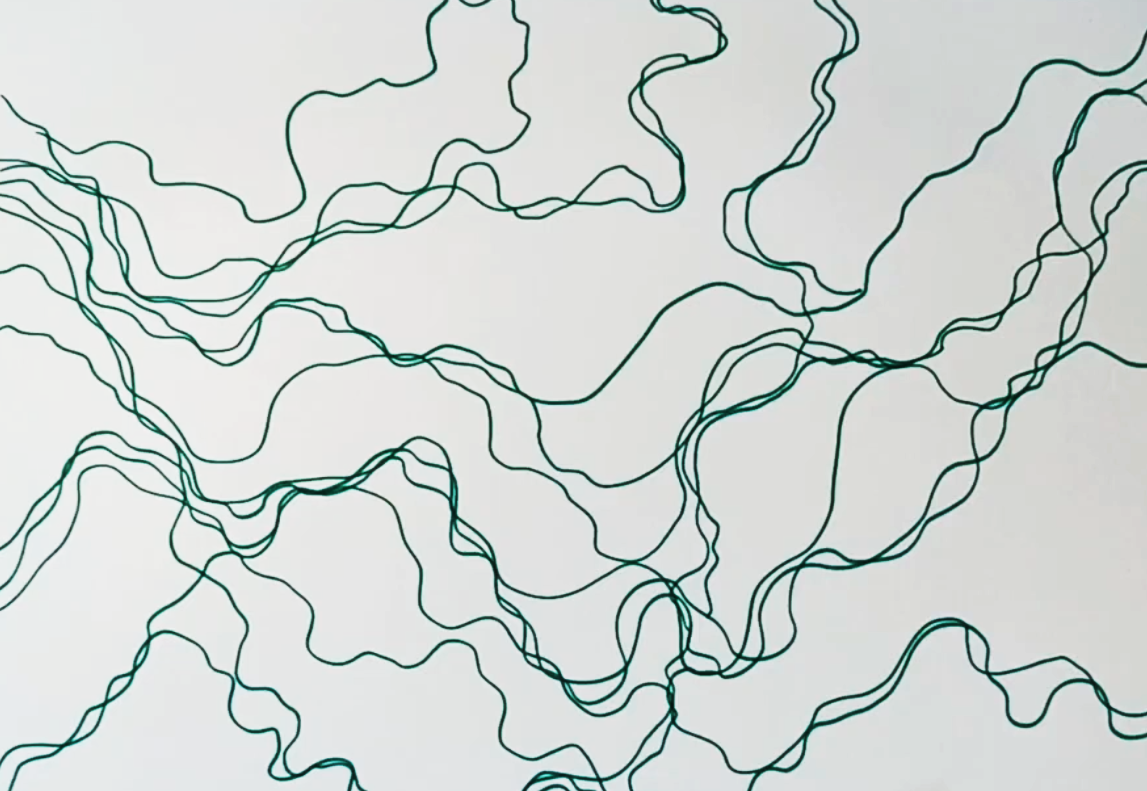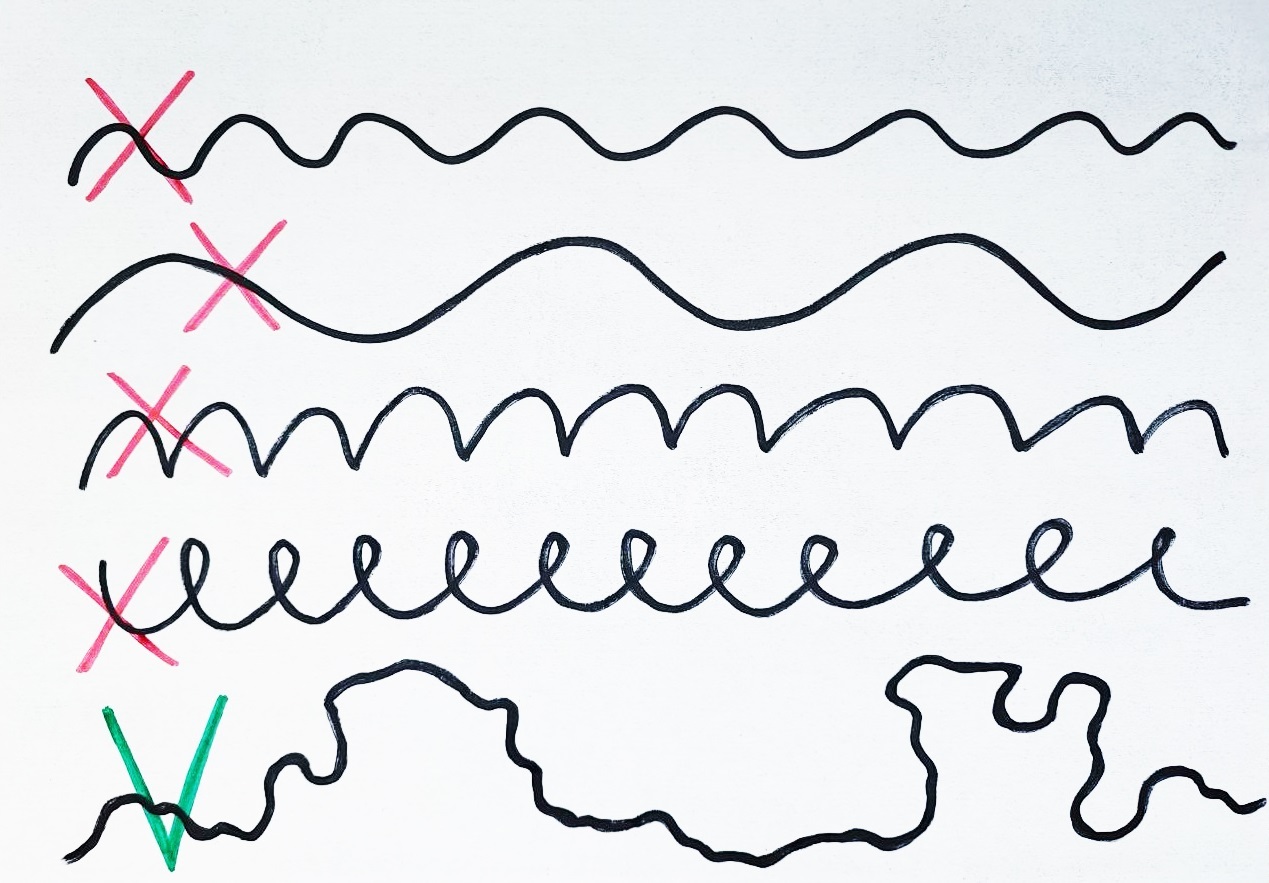Discover Pavel Piskarev's revolutionary technique that creates new neural pathways by drawing lines where you don't expect to see them

The Revolutionary Discovery That Changed Everything
In 2014, Russian psychologist Pavel Piskarev made a breakthrough discovery during a flight from Russia to Israel. He realized that our brains create change not through following familiar patterns, but by consciously resisting them. This insight led to the creation of the neurographic line—a patented drawing technique that literally builds new roads in your brain.
Here's what makes Piskarev's line NeuroGraphica revolutionary: It's the complete opposite of intuitive drawing. While most art techniques encourage you to "go with the flow," the neurographic line demands you go against your natural impulses. This conscious resistance is precisely what creates new neural pathways and transforms your brain.
Pavel Piskarev received a state certificate of copyright registration for this method in September 2015, making the neurographic line technique the only patented approach to brain rewiring art method.
Why the Neurographic Line Works: The Science of Conscious Resistance
Understanding the neuroscience behind Piskarev's method helps you appreciate why this conscious, active approach creates such powerful changes in your brain. This neuroplasticity drawing approach works because conscious resistance literally builds new neural pathways, making it a powerful brain rewiring art method.
The Problem with Spontaneous Drawing
When you draw spontaneously—letting your hand go wherever it "wants"—you're actually reinforcing existing neural patterns. Unlike spontaneous drawing, this method deliberately creates neuroplasticity through conscious resistance. As Piskarev explains:
"If you draw the line in the spur of the moment, completely spontaneously, it is no longer NeuroGraphica; it is simply repeating and reinforcing existing patterns of thinking and behaviour."
Think of it like walking home from work. When you take the same route every day, your brain goes on autopilot. You might not even remember the journey because you're following well-worn neural pathways. But when you deliberately take a different route, suddenly you notice everything—new shops, different architecture, unexpected details. Your brain becomes fully engaged.
Creating New Neural Roads
The neurographic line technique works like building new roads in a city. When you consciously direct your line to places you don't expect it to go, you're literally exploring areas where your neurons haven't been activated and connected before. Each act of resistance creates a new neural pathway, expanding your brain's capacity for change and creativity.
The Power of Going Through Resistance
Pavel Piskarev emphasizes:
"It is important to go through resistance to the end. Results won't emerge until you do it."
This resistance isn't an obstacle—it's the entire mechanism. When your hand wants to go right and you consciously guide it slightly left instead, you're:
- Breaking automatic patterns that keep you stuck
- Activating dormant neural networks in your brain
- Creating new connections between previously separate brain regions
- Building mental flexibility for real-life challenges
This isn't meditative drawing—it's active, conscious drawing through resistance. Here's how to master Piskarev's patented method:
Essential Understanding First
Critical principle: The neurographic line is NOT spontaneous. You must actively participate and consciously direct every movement. As the official NeuroGraphica documentation states: "The line does not travel where it wishes, but rather where you direct it. You have to do it yourself, despite resistance."

The Correct Neurographic Line Technique: Mastering Piskarev's Method Step-by-Step
Step 1: Conscious Beginning
Start your line anywhere on the paper. From the very first moment, your conscious mind must be actively engaged. This isn't about relaxing into flow—it's about maintaining alert awareness throughout the entire process.
Step 2: The Resistance Principle
Here's the heart of Piskarev's method: When your hand naturally wants to move in one direction, consciously guide it slightly in a different direction instead.
For example:
- If your impulse is to curve right, guide the line slightly more to the left
- If you feel like making a large curve, create a tighter one instead
- If the line wants to continue straight, add an unexpected gentle curve
Step 3: Continuous Conscious Direction
Never let the line go where it "wants" to go. Every millimeter must be consciously directed. You're not following your hand's natural movement—you're consciously overriding it while maintaining smooth, flowing motion. This is the essence of Piskarev's neurographic line technique: conscious direction over automatic impulse.
Step 4: Maintaining Smooth Flow Despite Resistance
The line must remain organic and flowing even though you're consciously resisting natural impulses. This creates a unique neurological state where conscious control works with, rather than against, natural movement patterns.
Step 5: Never Repeat
Critical rule: The neurographic line never repeats itself at any point. Each section must be unique. If you notice you're falling into repetitive patterns, consciously break them by changing direction, speed, or curve intensity.
Step 6: Work Through the Resistance
You'll feel mental resistance to this process—that's normal and necessary. Your brain prefers familiar patterns. Push through this resistance. This resistance is where the neuroplastic change happens.
Common Mistakes That Block Results
Understanding what not to do is crucial for mastering this subconscious drawing technique:
"Going with the Flow"
Mistake: Relaxing and letting your hand move naturally.
Correction: Stay consciously engaged. Every movement must be deliberately directed, even if it feels effortful at first.
Meditative Drawing
Mistake: Treating this as meditation or relaxation.
Correction: This is active brain training. Maintain alert, conscious awareness throughout the entire process.
Following Impulses
Mistake: Drawing where your hand "wants" to go.
Correction: Specifically direct the line to places you don't expect to see it. This unexpected direction is what creates new neural pathways.
Repetitive Patterns
Mistake: Falling into familiar curves or shapes.
Correction: Consciously break any pattern as soon as you notice it forming. Each section of the line must be unique.
Stopping When It Gets Hard
Mistake: Ending the session when mental resistance increases.
Correction: This resistance is the goal! Push through it for the full duration—this is where transformation happens.
The Deeper Purpose: Why Conscious Resistance Changes Everything
Pavel Piskarev designed this method based on a profound insight: Real change happens not through following familiar patterns, but by consciously choosing unfamiliar ones.
Breaking Automatic Patterns
In daily life, we operate largely on autopilot. We think the same thoughts, make the same decisions, and respond to challenges in predictable ways. The neurographic line technique trains your brain to consciously override automatic responses—a skill that transfers to every area of your life.
Building Neural Flexibility
Each time you resist your hand's natural impulse and consciously direct it elsewhere, you're strengthening your brain's capacity for conscious choice over automatic reaction. This neural flexibility becomes available for:
Breaking unwanted habits through conscious redirection
Creative problem-solving by exploring unexpected approaches
Emotional regulation by choosing responses rather than reacting automatically
Decision-making that goes beyond familiar options
Overcoming limiting beliefs by creating new neural pathways around possibilities
Transforming fears and phobias through conscious pattern interruption
Building self-confidence by proving you can consciously direct outcomes
Releasing anxiety patterns by training your brain to choose calm over worry
Healing past traumas by creating new neural networks that bypass old triggers
Improving relationships by developing conscious responses to conflict
Increasing mental resilience through practiced conscious choice-making
Developing intuitive abilities by accessing non-logical neural networks
Managing depression by actively creating new thought pathways
Boosting motivation by consciously directing energy toward goals
Enhancing focus and concentration through trained conscious attention
Creative problem-solving by exploring unexpected approaches
Emotional regulation by choosing responses rather than reacting automatically
Decision-making that goes beyond familiar options
Overcoming limiting beliefs by creating new neural pathways around possibilities
Transforming fears and phobias through conscious pattern interruption
Building self-confidence by proving you can consciously direct outcomes
Releasing anxiety patterns by training your brain to choose calm over worry
Healing past traumas by creating new neural networks that bypass old triggers
Improving relationships by developing conscious responses to conflict
Increasing mental resilience through practiced conscious choice-making
Developing intuitive abilities by accessing non-logical neural networks
Managing depression by actively creating new thought pathways
Boosting motivation by consciously directing energy toward goals
Enhancing focus and concentration through trained conscious attention
Accessing Hidden Potential
As Piskarev explains:
"We explore areas where our neurons have not yet been activated and connected, and discover previously unseen opportunities."
The neurographic line doesn't just create pretty drawings—it activates dormant neural networks that contain untapped capabilities and insights.
See the Neurographic Line Technique in Action
Understanding the theory is important, but seeing the correct technique demonstrated makes all the difference. Watch this step-by-step video to see exactly how Piskarev's neurographic line should be drawn.
Watch: How to Draw the Neurographic Line Correctly - Piskarev Method
In this demonstration, you'll see:
- The exact hand movement for conscious resistance
- How to maintain organic flow while directing the line
- Common mistakes and how to avoid them
- The difference between neurographic lines and regular drawing
- Live examples of the resistance principle in action
Many students find that watching the technique before practicing makes mastering the conscious resistance principle much easier.
How to Practice the Neurographic Line: Learning from Nature
The best way to understand what a neurographic line looks like is to study nature's own examples.
Simple practice method: Print photos of clouds, ocean waves, or rivers. Start tracing along the edges of the clouds, the curves of the waves, or following the path of a river.
As you trace, you'll notice something important: the line never repeats itself at any point. It constantly changes direction—sometimes curving gently left, then shifting right, then making an unexpected turn. This is exactly what Piskarev's neurographic line should look like.
Nature creates perfect neurographic lines because natural forms never follow predictable patterns. Every part of a cloud's edge is unique. Every wave has a different curve. Every river bend is unlike the one before it.
By tracing these natural forms, you'll train your hand to create lines that flow organically while never repeating the same movement twice.

The Neurographic Line as Foundation for All NeuroGraphica
Understanding the neurographic line correctly is crucial because it appears in every NeuroGraphica algorithm.
Key applications in NeuroGraphica:
- Connecting shapes in algorithmic drawings
- Creating flow between different elements
- Integrating compositions into coherent wholes
- Adding neural pathway activation to any drawing
This is why mastering the line technique is essential—it's not a standalone practice but the foundational skill that makes NeuroGraphica methods effective.
Frequently Asked Questions About Piskarev's Technique
Q: What makes this different from other brain rewiring art methods?
A: The neurographic line technique specifically uses conscious resistance to create new neural pathways, making it uniquely effective for neuroplasticity activation.
Q: This sounds exhausting. Shouldn't drawing be relaxing?
A: The neurographic line isn't designed for relaxation—it's designed for transformation. The initial mental effort is what creates new neural pathways. Once mastered, it becomes a powerful tool for conscious change.
Q: How is this different from other drawing techniques?
A: Most drawing techniques either express existing patterns or create relaxation. The neurographic line specifically interrupts existing patterns and actively creates new neural pathways through conscious resistance.
Q: What if I can't resist my natural impulses?
A: This is normal initially. Start with small resistances—if your hand wants to curve sharply right, curve it only slightly right instead. Build up your capacity for conscious direction gradually.
Q: Can this really change my brain?
A: Yes. Neuroplasticity research shows that novel, conscious activities create new neural connections. The neurographic line combines novelty (unexpected directions) with consciousness (deliberate choice) for maximum neuroplastic impact.
Ready to apply the neurographic line technique in complete NeuroGraphica algorithms?
Explore Fundamentals of NeuroGraphica and learn how to integrate this brain rewiring art method with other techniques for anxiety relief and personal transformation.
